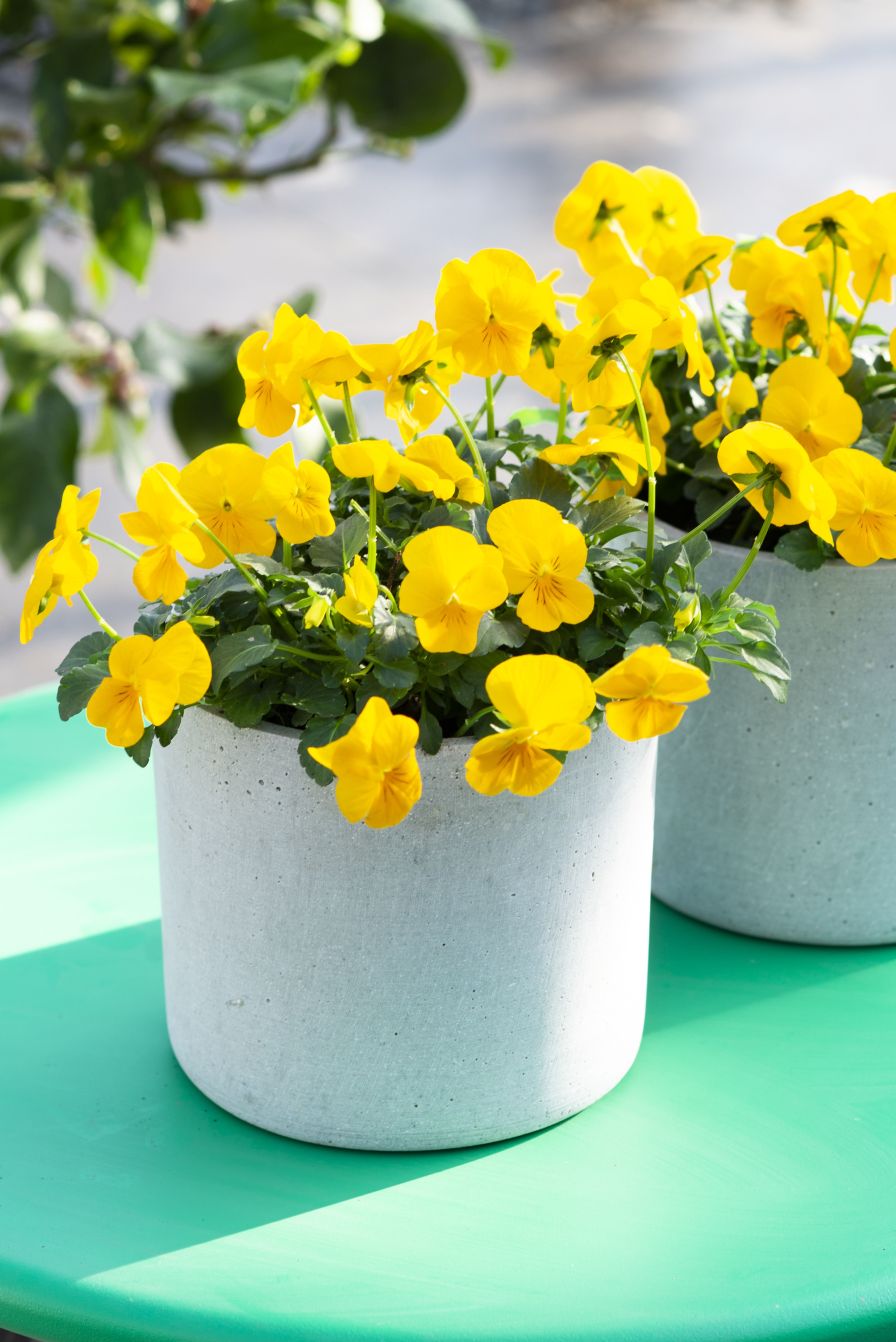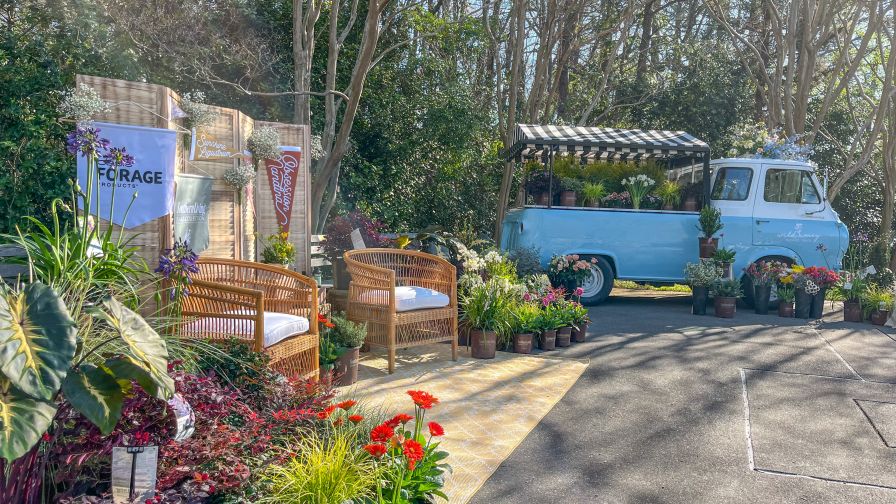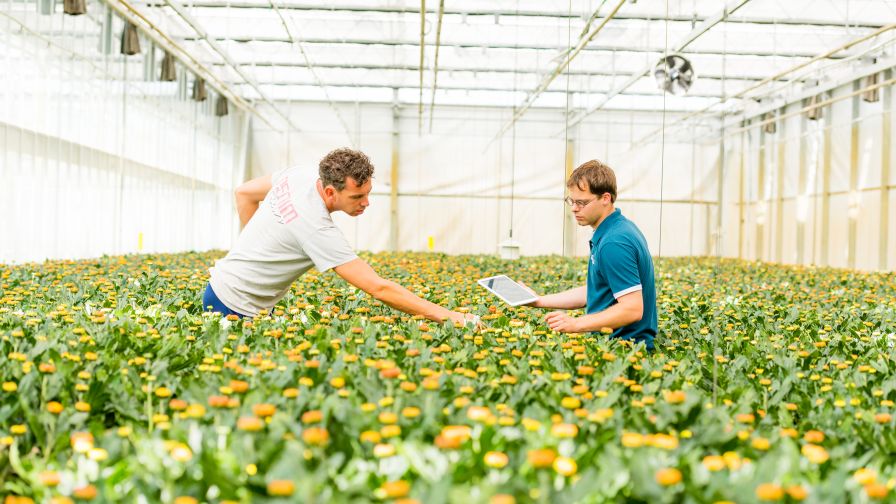A Plant Breeder Perspective on the Growing Market Shift from Pansies To Violas

Todays pansies and violas have more of the characteristics bred into them that make for easier production. For instance, Syngenta Flowers’ Deltini (Viola cornata) series works well for winter flowering in the south and west and early spring in the north. They have fast crop times and a four-day bloom window between colors, even under short-day conditions. Photo: Syngenta Flowers (‘Deltini Yellow’ pictured)
Todd Perkins, Senior Flower Breeder at Syngenta Flowers, has been involved with pansies and violas since he started breeding professionally. His biggest challenge as a breeder is to create gorgeous varieties that can be reliably produced to a certain availability, at an elevated level of quality, and in a specific product form. It is no small task.
The Rocky Road to Hybrid Viola Varieties
Over everything else — growers, brokers, consumers, and the like — Perkins says his first customer is his production.
“If I can’t build a successful product for my production, you will never see it because it won’t get through the system,” he says. “It has to be readily available at the highest level of quality and have close to 100% germination. That germination must be extremely uniform to satisfy plug operations.”
Perkins worked on Velour violas at Harris Moran when he first started there in 1986. PanAmerican Seed would also eventually introduce the Princess series of violas during that time period.
“What made the Velour and Princess series so uniquely important at the time is they were more compact and had more of a bedding-plant look versus looking like ephemerals or wildflowers, which is what the traditional viola material tended to do,” Perkins says.
Perkins ended up working on new product development for Goldsmith Seeds. At the time, there were no viola hybrids on the market, so he, along with other breeders, started making breeding crosses, trying to incorporate this new compact bedding-type architecture into a wider range of materials. He says once they started to make those crosses, breeders saw the potential benefits hybrids bring to the market because they had the performance and vigor to establish themselves in a wide range of environments. The plants were floriferous and fast to flower. They exceeded the expectations of what anyone thought pansies could do and offered the perfect bedding plant opportunity. Other breeding companies came to the same realization, and hybrid violas soon became the preferred product form over open-pollinated varieties.
There were still some barriers to overcome with breeding development, however, namely keeping the female parent from producing female seed that would negate the hybrids. Perkins says that was the single challenge companies encountered that barred them from getting viola hybrids up and running, and it remains a challenge today. Additionally, the North American market preferred the bigger flowers on pansies that violas lacked, so violas remained the little sister to pansies.
In the mid-90s, Goldsmith Seeds introduced the Pennies Series with five colors. As series such as the Pennies and the Sorbets began to compete aggressively in North America, and then globally, the level of uniformity and the quality standard for viola hybrids just kept ratcheting up higher.
Breeding for Diverse Conditions Brings Sundry Challenges
Unlike other crops that breeders produce just for the summer or specifically for the spring, violas and pansies present a unique challenge because they need to be successful in the fall with declining daylength and dropping temperatures. They also need to work well for a biennial culture in Northern Europe where they grow in the dark and cold through the winter. And then they must flower during a predictable time in the spring in the cold. Breeders are often trying to achieve all of this with the same material or series, says Perkins, who adds that if all that weren’t enough, the product must also finish rapidly to fit in with production schedules and be in flower during tight sales windows.

Flopping is a common problem with pansies. Ball Seed’s ‘Matrix Red Wing’ features strong branching with flowers held on short, strong peduncles to help keep plants upright. Photo: Ball Seed
Violas Making Inroads into the Pansy Market
Despite the huge demand for pansies, the global market for them is slowly declining as the quality and range of violas increases. Breeders are working more with violas, according to Perkins, because they are more durable, offer wider color options, and present better at retail.
In addition to the violas, there is the other breeding extreme — fall-optimized pansies, traditionally called extra-large pansies. Breeders’ goal here is to optimize these pansies to have a large flower size to offset flower shrinkage that occurs from the warmer temperatures during summer production. Since these products will be sold into the fall, breeders begin with material that produces a larger flower from the start to offset flower shrink caused by the warmer temperatures of summer production.
More Great Products on the Horizon
Despite the difficulties that keep pansy and viola breeding interesting, Perkins is optimistic we will see even more excellent product introduced in the future.
“Some people think we have done everything that can be done with pansies and violas,” he says. “I don’t buy it. With the amount of diversity and variability in the viola germplasm and the level of plasticity, we are just starting to tap into what can be accomplished. We have not seen the end of breeding. I see a bright future ahead for this crop category.”
Dr A’s Thoughts on Pansies/Violas
Contributing Editor Allan Armitage was kind enough to share his take on the pansies and violas market.
Their value: One would think that with the intense breeding in the last 20 years, people would have tired of them. Not at all. They are still the best source of winter and late spring color for landscapers and gardens.
Difficulty of growing: Little progress has been made in adding heat tolerance to the genome of viola. In general, they are still a cool season plant, which is just fine. However, for fall sales and installation, those crops must be produced in warm late summer/fall months. Global warming has made these months even warmer in the last 10 years, and profitable production keeps moving further north.
Breeding: A breeding company’s credo that “There is never enough” is obvious in bedding plants (petunias, marigolds, begonias) and perennials (heuchera, echinacea, hellebore). The huge number of introductions in the early 2000s (Penny, Sorbet, Presto, Bilbo, Accord, etc.) made it seem that there was little room remaining and breeding certainly slowed. However, introductions that spill over (Freefall, Coolwave) and the inclusion of other species has resulted in still more choices (Deltini, Cats) in the 2020s.
Viola/Pansy debate: Which is easiest to produce, more colorful, or the best outdoor performer has always been up for debate (at least since Sorbet came on the scene). After years of debate and trialing, the jury is still out. There are those who would have nothing other than violas for the number of flowers and branching, and those who must have the larger flowers and proven performance of pansies. If my retail outlets are any indication, it does not matter for the gardener — they will likely only find Super Majestics or 4-inch annuals in the box store. Garden centers may do better.









